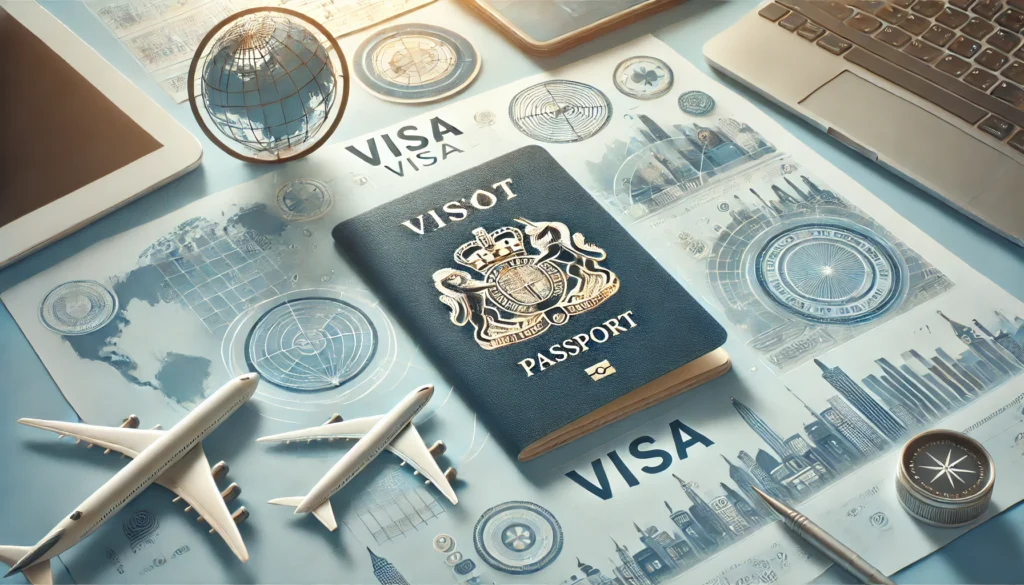Introduction
Traveling to the United States can be an exciting adventure for children, whether it’s for a family vacation, educational experiences, or even longer-term stays for studies. However, navigating the U.S. visa system can be complex, especially when it comes to understanding the various visa options available for children. This blog post aims to clarify the different types of U.S. visas that children can apply for, including tourist visas, student visas, and other relevant categories. We will also address common questions to help parents make informed decisions.
Types of U.S. Visas for Children
Tourist Visa (B-2)
The B-2 tourist visa is one of the most common options for children traveling to the U.S. for leisure purposes. This visa allows children to visit family, enjoy vacations, or participate in activities such as sports or music camps. US Business Visa Requirements.
Requirements:
- Application Form: Complete the DS-160 form online.
- Visa Fee: Pay the non-refundable visa application fee.
- Interview: Children aged 14 and older generally need to attend an interview.
- Parental Consent: If a child is applying alone, parental consent may be required.
Student Visa (F-1 and M-1)
For children who wish to study in the U.S., there are two main types of student visas: the F-1 visa for academic studies and the M-1 visa for vocational or non-academic programs.
F-1 Visa Requirements:
- Form I-20: Issued by a U.S. school that is authorized to enroll international students.
- Financial Evidence: Proof of sufficient funds to cover tuition and living expenses.
- English Proficiency: Some schools may require proof of English language proficiency.
M-1 Visa Requirements:
- Form I-20: Similar to the F-1 visa but for vocational programs.
- Financial Evidence: Proof of funds for tuition and living costs.
- Course Duration: The M-1 visa is typically granted for the duration of the program plus any practical training period.
Exchange Visitor Visa (J-1)
The J-1 visa is designed for children participating in exchange programs, such as summer camps or cultural exchanges. This visa allows children to experience life in the U.S. while engaging in educational and cultural activities.
Requirements:
- Sponsorship: Must be sponsored by an organization that is designated by the U.S. Department of State.
- Form DS-2019: Issued by the sponsoring organization.
- Financial Evidence: Proof of sufficient funds to support the child during the stay.
Other Visa Options
In addition to the above-mentioned visas, there are other options that may be applicable in specific situations, such as: US VISA FOR CHILDREN.
- K-2 Visa: For children of K-1 visa holders (fiancé(e) visa).
- T Visa: For child victims of human trafficking, allowing them to remain in the U.S. and receive assistance.
FAQs
1. Can children apply for a U.S. visa without their parents?
Generally, children under 18 need parental consent to apply for a U.S. visa. However, they may need to attend an interview alone if they are 14 or older.
2. How long does the visa application process take?
The processing time can vary based on the type of visa and the U.S. embassy or consulate where the application is submitted. It is advisable to apply well in advance of the intended travel date.
3. What documents are typically required for a child’s visa application?
Common documents include:
- A completed visa application form (DS-160)
- Visa application fee receipt
- Passport with at least six months of validity
- Recent passport-sized photographs
- Parental consent letter (if applicable)
- Supporting documents related to the visa type (e.g., Form I-20 for student visas)
4. Are there age restrictions for applying for certain visas?
While there are no specific age restrictions for tourist visas, student visas typically require that the child be of school age. For some programs, children may need to be at least 5 years old.
5. Can a child travel to the U.S. alone?
Yes, children can travel alone, but it’s essential to ensure that they have the necessary documentation and parental consent. Airlines often have specific policies regarding unaccompanied minors.
Conclusion
Exploring U.S. visa options for children is crucial for families planning travel or educational experiences in the United States. Whether applying for a tourist visa for a memorable vacation or a student visa for an enriching academic opportunity, understanding the requirements and processes is key to a smooth application experience. By being well-informed and prepared, parents can ensure that their children have the opportunity to explore, learn, and grow in a new and exciting environment. If you have further questions or need assistance, consider consulting with an immigration expert or the nearest U.S. embassy or consulate. Safe travels!

